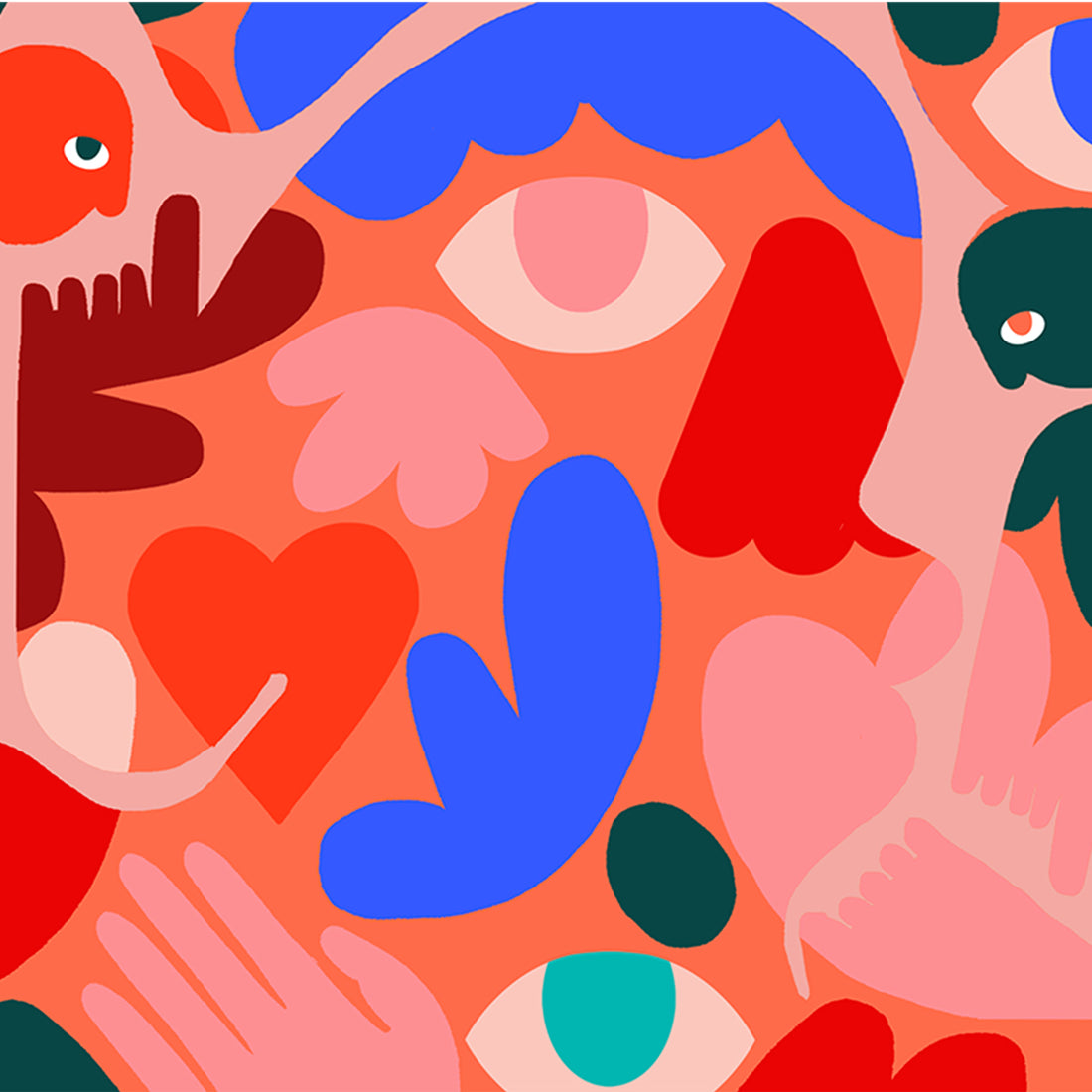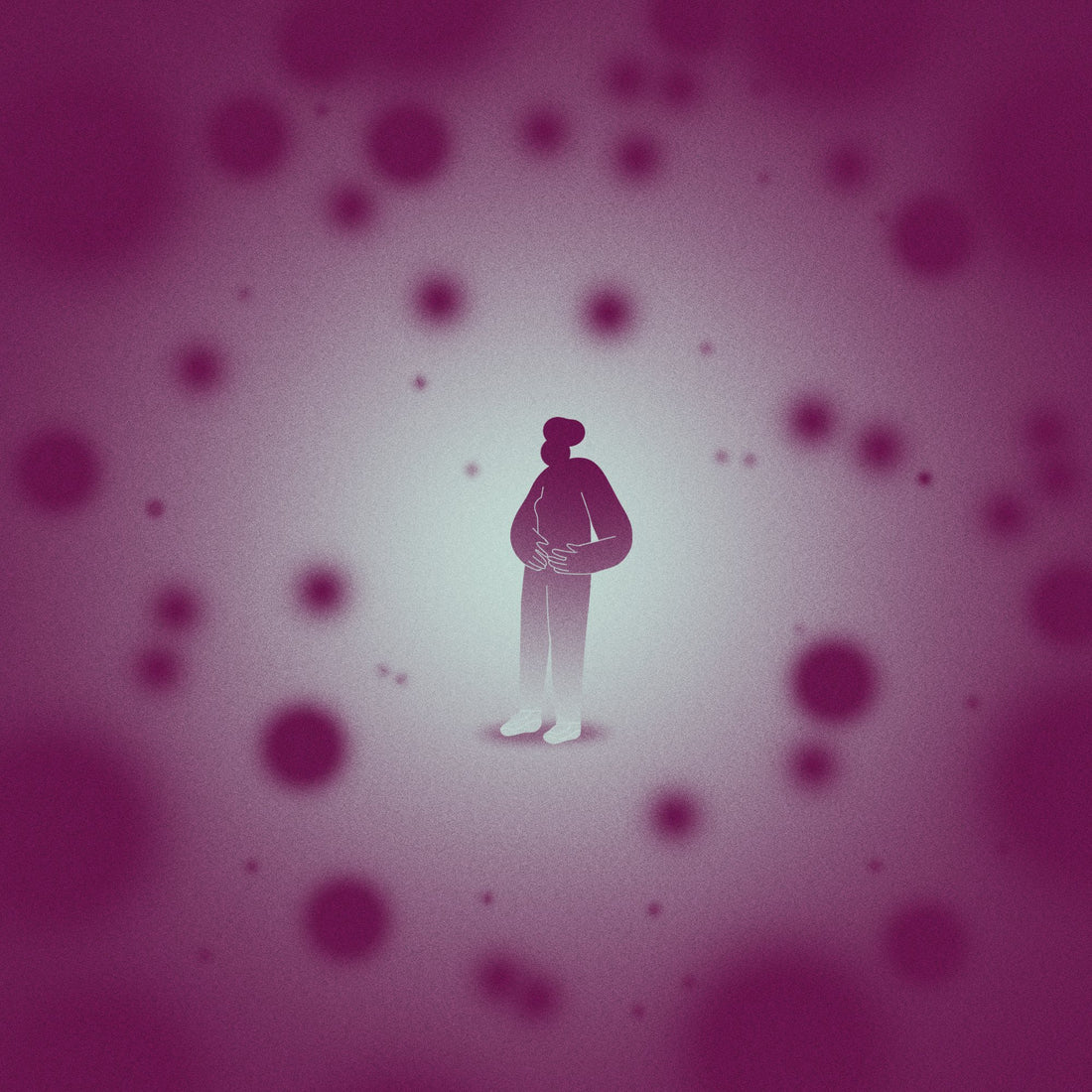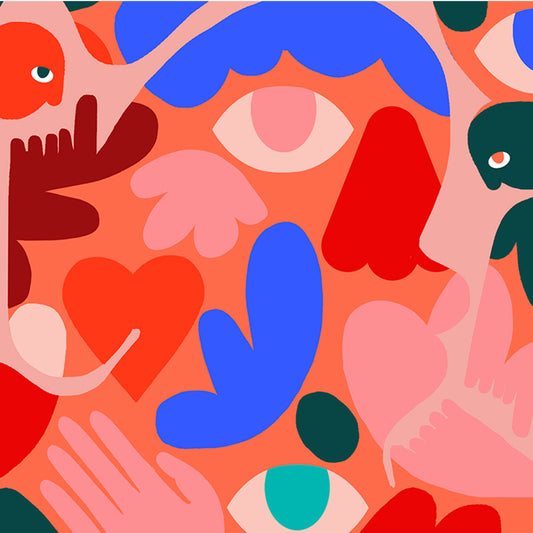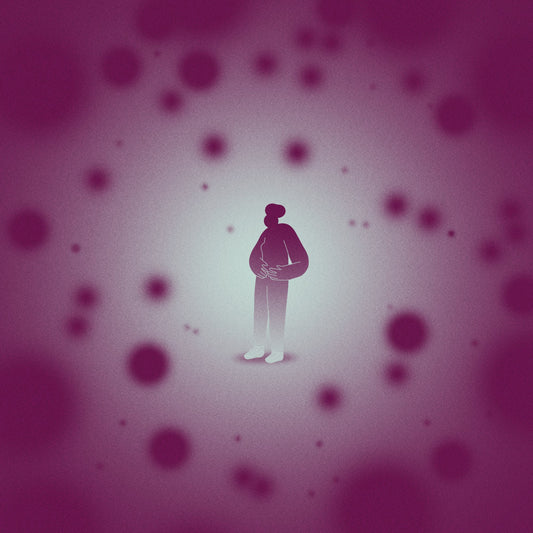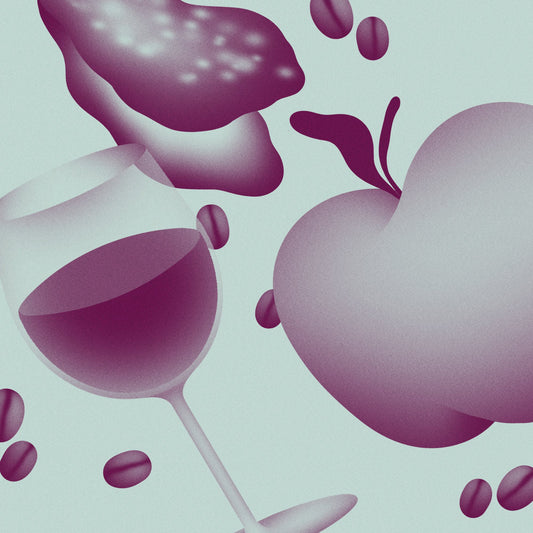Alexandra Fine, Credentialed Sexologist, M. Psych | Written by Dame
Is Hypersexuality Really an Illness? | Signs of Hypersexuality | Hypersexuality vs. High Libido | Possible Causes | Treatment
(Caution: potentially offensive language ahead.)
When we were growing up, everyone knew at least one “horndog” or “nympho.”
It was the guy (or girl) who couldn’t get enough sex. It was all they thought about, all they talked about – and if they had game, it was just about all they ever did.
No one thought much about it. It was just who they were. Some people were repulsed by it, some ignored it, and a few were just plain envious.
It’s unlikely that anyone entertained the thought that there was something “wrong” with the horndog or the nympho. Those who were offended were more likely to just shrug off their behavior as annoying, or overbearing, or just plain weird.
Guess what? There’s a good chance that the horndog or nympho wasn’t just “being a guy” or “being a girl.” They were quite possibly suffering from a mental health disorder called hypersexuality, defined as “a repetitive and intense preoccupation with sexual fantasies, urges and behaviors that is difficult to control.” A simpler way to say it? Sex addiction.
Those hypersexual people we knew – or still know today – may have seemed carefree in their pursuit of sex. That’s not necessarily true; those suffering with true obsessive behaviors usually experience great distress and major life problems because of their addiction(s). Hypersexuality is no different.
Let’s learn more about it, and what can be done about it.
Is Hypersexuality Really an Illness?
To be honest, the definition we used isn’t officially included in the official psychiatric handbook printed by the American Psychiatric Association, the DSM-5 (Diagnostic and Statistical Manual of Mental Disorders).
It was the proposed definition for hypersexual disorder that was submitted by Dr. Martin Kafka of the McLean Hospital Department of Psychiatry, but rejected for the latest edition of the DSM. The symptoms of hypersexuality, at least for now, are only included under the catch-all category of “other specified sexual dysfunction.”
However, the World Health Organization’s International Classification of Diseases (ICD) which is used around the world lists “excessive sexual drive” as one of those possible “sexual dysfunctions.” It has also has added a new diagnosis of “compulsive sexual behavior” to its manual. That condition is defined as “a persistent failure to control intense, repetitive sexual impulses or urges resulting in repeated sexual behaviour.”
What difference does all of that make? It simply illustrates the fact that hypersexuality is still a rather controversial topic, even in the mental health field.
Some experts insist that it’s simply normal behavior “at the extreme end of sexual functioning,” and point to the fact that sexual addiction apparently doesn’t cause changes in the brain like drug or alcohol addiction do. Others believe hypersexual behaviors to be extensions of other mood disorders like obsessive-compulsive disorder, impulse control disorder or borderline personality disorder,
However, many who practice in the field of sexual medicine, such as Yale psychiatrist Marc Potenza, say that hypersexuality disorder is indeed an addiction. They argue that it can be accompanied by “significant social and personal distress and medical morbidity,” qualifying it as a diagnosable condition and as addictive behavior.
This debate has yet to be resolved, as explained in an extensive review of the literature published in the Journal of Behavioral Addictions. And the disagreement has made it difficult for medical professionals to fully agree on what types of behavior constitute hypersexuality. Let’s talk about that next.
Signs of Hypersexuality
Most of us enjoy masturbation and regularly engage in sexual thoughts and sexual fantasies. A large number of us view online pornography or engage in cybersex. Some people regularly have multiple partners, pay for sex, or have what society might view as “unusual” tastes or preferences for sexual activities or partners. Needless to say, there’s nothing wrong with any of that, as long as the activity is consensual and legal.
However, not everyone can control their sexual appetites. When they become a driving force in life – impossible to manage and control, a source of personal distress, a disruptive element in everyday life, or a potential cause of harm to self or others – that’s when experts say the behaviors cross the line, becoming sexual compulsivity and hypersexual behavior.
For example, masturbation and pornography use are normal sexual behavior, particularly in the 21st century. Compulsive masturbation, or ignoring work or social obligations to watch porn online, however, are not “normal.” They’re excessive, and potentially dangerous.
Mental disorders are typically treated by psychologists or psychiatrists, but there’s no way that any professional can diagnose a condition like compulsive sexual behavior without an in-depth, honest evaluation of a patient’s attitudes and actions. They’ll normally start with an interview to determine the extent and effects of the patient’s sexual attitudes, feelings and behaviors, and whether they result in impairment of regular daily function.
The questions they’ll ask indicate the basic signs and symptoms of hypersexuality. For example:
- Do you regularly have intense and recurring sexual urges, fantasies and behaviors?
- If so, do you feel that you can’t control them even when you try? How much of your time each day do they occupy?
- Do sexual thoughts and behaviors regularly interfere with your home life, relationships, job attendance or performance, or social obligations?
- Do you use sexual thoughts or behaviors to “escape” from stress, anxiety, depression or loneliness?
- Do you feel upset, guilty or remorseful after sexual activity? Do you lie to cover up your sexual activity, thoughts or fantasies?
- Do you have difficulty having or maintaining stable personal or sexual relationships?
- Do your sexual behaviors threaten or cause harm to yourself, your sexual partners or your family, and do you feel unable to stop them even when you understand their possible consequences?
Multiple attempts have been made to more rigorously identify compulsive sexual behavior.
Noted sex researcher Rory Reid proposed a Hypersexuality Behavior Consequences Scale which attempts to quantify the severity of these behaviors and their effects. The Bergen-Yale Sex Addiction Scale is another tool that’s been developed for diagnosis of hypersexuality. And the American Psychiatric Association has developed its own Hypersexuality Disorder Screening Inventory – which is somewhat ironic, since the same organization has refused to include hypersexuality in the DSM-V manual.
However, most therapists simply do their own detective work in order to diagnose sexual addiction. And even for some experts, it can be difficult to distinguish between patients who have a mental disorder in need of treatment – and those who simply have a very high sex drive.
Hypersexuality vs. High Libido
No two people have exactly the same level of sex desire – even long-time partners or married couples.
Libido is a complicated function of genetics, physical and psychological factors, and environment – regulated by a collection of hormones and neurotransmitters like dopamine, estrogen and testosterone.
A person’s sex drive can also vary over time due to aging, illness or disease, lifestyle factors and the medications they take. It can even vary from day-to-day in vulva-havers, because of the natural ebb and flow of estrogen levels that accompany their menstrual cycle and occur during pregnancy and breastfeeding.
That’s why some people have high levels of sexual desire, while others are perfectly satisfied with just the occasional romp in the sheets, and a few have no desire for sex at all.
This doesn’t mean that those with extremely active libidos are hypersexual; they simply are – as we referenced earlier – at the high end of sexual functioning. As long as they can control their urges, desires and activities, and their sexual needs don’t interfere with their everyday life or hurt others, they’re not sex addicts. They’re simply people who desire lots of sex.
One interesting study published in the Journal of Sex Medicine illustrated the fine line between high libido and hypersexuality. It surveyed a group of penis- and vulva-havers who self-identified as hypersexual – and found that only half could actually be diagnosed with a sexual behavior disorder. The rest simply craved sex.
Possible Causes of Hypersexuality
What causes hypersexuality? You probably won’t be surprised to learn that even experts aren’t sure. There are, however, some other diagnosable mental and neurological illnesses for which hypersexuality is a symptom.
Bipolar disorder is often accompanied by huge swings in libido that can cross the line into hypersexual behavior at times; schizophrenia can also cause similar issues. Those diagnosed with borderline personality disorder often display the promiscuity and sexual impulsivity seen in hypersexuals.
Those are some of the common mental conditions liked to hypersexuality, but there are common health problems that can provoke sex addiction or inappropriate sexual behaviors as well. Most are neurological issues like Alzheimer’s disease and dementia, Kleine-Levin syndrome, Kluver-Bucy syndrome, and even, on occasion, autism. Side effects of some medications used to treat Parkinson’s disease can also be at fault.
Not all causes of sex addiction can be so clearly understood, however. As with most types of mental illness, the underlying causes are more theory than established fact.
The American Association for Sex Addiction Therapy lists a number of potential underlying factors. They include heredity and biology, hormone imbalance, psychological issues which involve motivation, mood and cognitive function, trauma caused by previous physical, mental or sexual abuse, and severe lack of intimacy. High levels of depression and stress have also been implicated, as has substance abuse.
Speaking of the latter, there is some evidence that substance use (particularly involving methamphetamines) may play a role in the development of hypersexuality. There are also theories advanced by sex addition therapists such as Patrick Carnes (whose clinic treated Tiger Woods after his well-publicized sexual addiction problems), claiming that the prevalence of sexual material online has led to an increase in hypersexual behavior.
So that’s what hypersexuality is – more or less. What can be done to treat it?
Treatment for Hypersexuality
Treating an illness whose conceptualization and psychopathology are so difficult to define and understand presents a challenge, to put it mildly.
There are self-help groups for sex addicts, and many claim to have had success when working with hypersexuals to control and/or overcome their urges and desires. In most cases, though, health care professions are best able to help.
The initial step is to have doctors to rule out potential medical causes of the condition, such as the neurological diseases that may produce compulsive sexual behavior. A mental health specialist is the logical next step; they can first diagnose any co-existing conditions (like depression or substance abuse) that could be contributing to the patient’s hypersexuality. After that, therapeutic and pharmacological approaches can be considered.
Published studies on the effectiveness of psychotherapy to treat hypersexual behavior are limited. But there’s some evidence that individual sessions (possibly combined with group and family therapy) that focus on possible anxiety and depression, and issues like self-image, self-esteem, sexuality and social skills, can be useful. Some therapists also utilize cognitive behavioral techniques to try and modify or lower the patient’s sexual desire.
There are health professionals who treat hypersexuality in the same way they treat paraphilias (sexual fetishes), with hormone therapy. The approaches that appears to be more effective are the use of gonadatropin-releasing hormone agonists (GNRH) and serotonin reuptake inhibitors (SRIs); the evidence is purely anecdotal at this point, but both appear promising.
Some therapists also prescribe common SSRIs like Celexa (an antidepressant known for decreasing the desire for sex) or the anti-opiate medication naltrexone, which has shown effectiveness in controlling other addictions like gambling and kleptomania.
Those are all approaches still in their initial stages of trial, however. Much more research is necessary to determine the best way(s) to treat patients who exhibit the signs and symptoms of hypersexuality.

